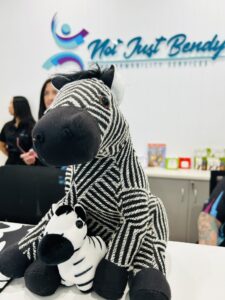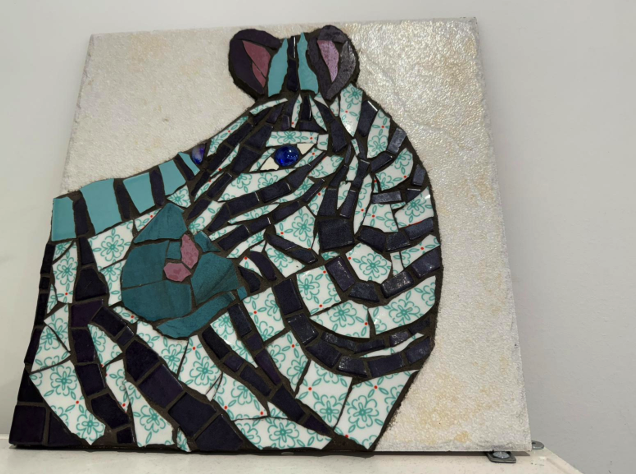Have you noticed zebra references all around Not Just Bendy and wondered why? The zebra is more than just a striking animal—it’s a powerful symbol for those with hypermobility and Ehlers-Danlos Syndrome (EDS).
Why Zebras?
In medicine, the phrase “When you hear hoofbeats, think horses, not zebras” is used to remind doctors to consider the most common diagnoses first. However, for those with EDS, they often embody the “zebras” of the medical world: unique, frequently misunderstood, and in need of nuanced care and understanding from health professionals. This is why people with EDS often refer to themselves as zebras—distinctive and deserving of recognition for the challenges they face.


The EDS Zebra Community and Symbolism
In 2006, the zebra was adopted as the official mascot for EDS awareness, uniting those affected by EDS and hypermobility under a shared symbol. Each zebra’s stripes are as unique as each person’s journey with EDS. From the struggles with chronic pain to navigating healthcare systems that may not understand their needs, the zebra represents strength, resilience, and the distinctive experiences that come with EDS.
By wearing their stripes with pride, people with EDS raise awareness and create a community of support. During EDS Awareness Month in May, zebras everywhere use this symbol to bring visibility to their condition, encouraging more research, understanding, and specialised care.

Our Use of Zebras in Not Just bendy
Our use of the zebras throughout Not Just Bendy reflects our respect and acknowledgement of this resilient community. We are dedicated to providing care and resources to help zebras feel understood and empowered. It’s a reminder that if you feel your symptoms are overlooked or misdiagnosed, you’re not alone—we are here to support you.
Spot Our Favourite Zebras Around Not Just Bendy!

The EDS Zebra Community and Symbolism
Zebbie
Perhaps the most significant Zebra at Not Just Bendy is Zebbie, our beloved mascot, designed by the inspiring Chloe Wigg. Zebbie has a backstory – click here to learn more! If you’d also like to explore Chloe’s beautiful paintings and artwork, click here.
Ziggy
Meet Ziggy! You may have seen him as you come into the clinic. Ziggy lives at the reception desk and greets everyone coming into the clinic. He is named after our Principal Physio Sharon’s beloved late cat.
Sharon serendipitously stumbled upon Ziggy in a decor shop one day during a stressful period when the new clinic fit out was being completed (and he was half price too!). Ziggy is one of the first Zebras added to our current clinic.


Bandit
Bought at a market at Mt Tamborine after a weekend away, Sharon couldn’t believe her luck finding this mosaic tile zebra art in the NJB colours! He sits high on a shelf in the waiting room with that knowing gaze. And he is named for the character in Bluey mostly as his voice is Dave Mccormack who is the lead singer of legendary Brisbane Band Custard.
A Dazzle of Zebras
Did you know that a group of zebras is called a “dazzle”? It’s truly a fitting term, as people with hypermobility and EDS truly dazzle with their resilience, especially as a community.

Where Do We Find All Our Weird & Wonderful Zebras?

As well as purchasing in stores and markets, we keep a close eye on facebook marketplace and give unwanted second hand zebras a place to call home. Also we have all of your scouring the earth to bring us beautiful little zebra gifts! The one on the left was the first zebra a client ever gave Sharon way back when NJB started in 2020. The glass one on the right is a perfect blend of zebra stripe and a slightly unbalanced female form which represents the clinic to a tee.
Count the Zebras at Not Just Bendy
Here’s a fun game for those who have visited our Paediatric Clinic (where our paediatrics physiotherapist Laurel works)! Can you count the number of zebras hidden there?

More Information
For more about the zebra symbol and its significance, visit the Ehlers-Danlos Society website.
Join Our Hypermobility Community!
Stay up to date with hypermobility community news, the latest research, expert insights and practical tips for managing hypermobility and EDS.
We respect your time and privacy – no spam, just valuable content!
